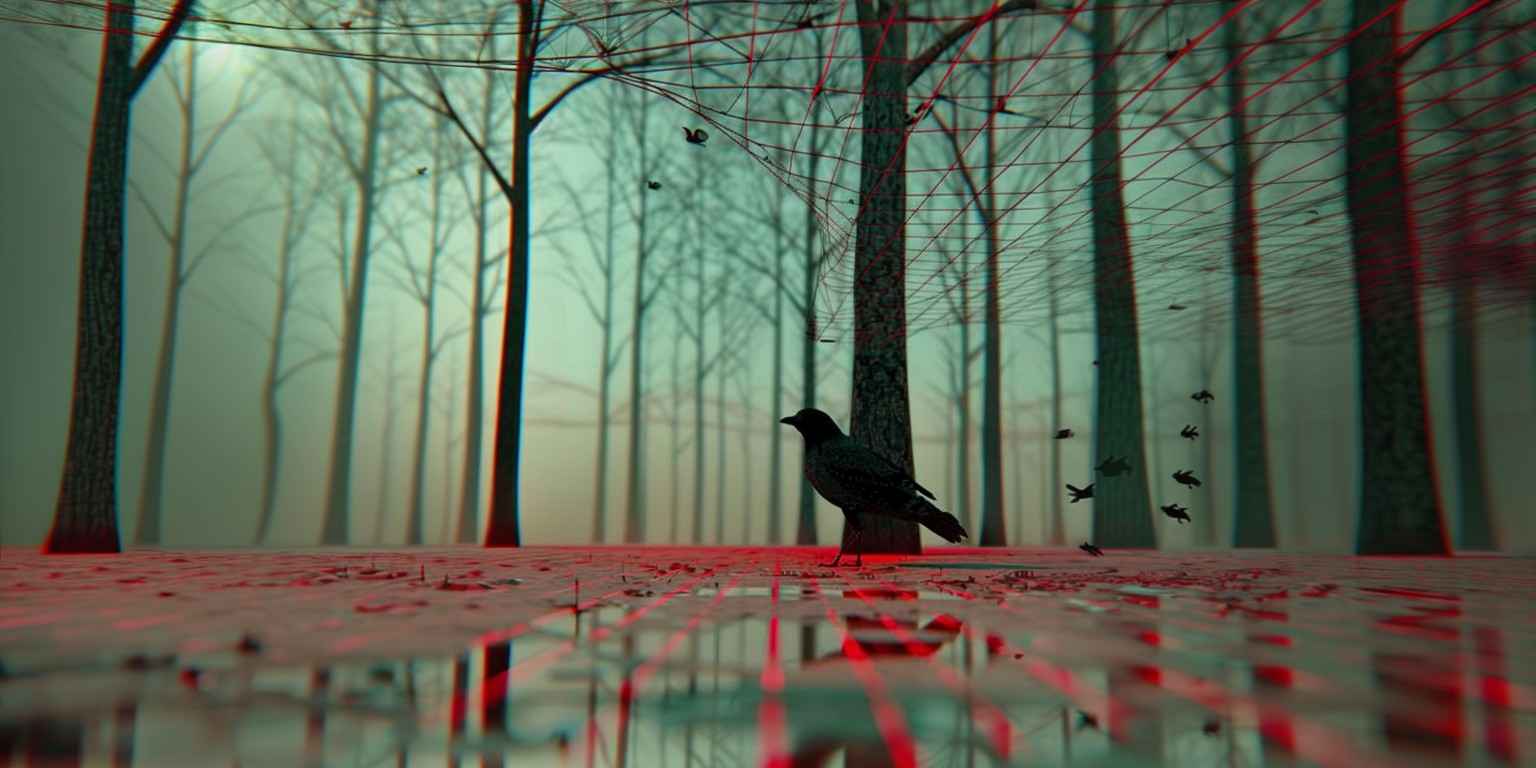This post forms the second half of a discussion opened in the previous one, ‘The Weird and the Uncanny‘.
As a way to approach the psychotherapeutic implications, I want to talk about the difference between a labyrinth and a maze.
Although the words are used interchangeably in English, in the ancient world of Greece, India and the Americas labyrinths are always depicted as unicursal – having only one path through – rather than the multicursal mazes that appear from the Renaissance onwards. Although the Greek myth of the minotaur seems to describe a multicursal labyrinth, and logically it must be many-branched, we never find this depicted until early modern times. I am going to suppose that this distinction represents a change in the imaginal world, as we move from the amodern to the modern (I am not using ‘pre-modern’ as it smuggles in a belief in questionable ‘stages’ of history).
A fundamental axiom of Weird Therapy – this so far non-existent therapeutic modality – may be that in avoiding the labyrinth of existential horrors, we get lost in the maze of the neurotic. A labyrinth may, it is true, be the lair of a minotaur, but it has only one way in and one way through. A maze, on the other hand, is a human-made game, an artifice, often full of traps, deceptions, trick mirrors, doppelgangers and dead ends. The awed fear of the monstrous is, I want to suggest, ultimately preferable to a state of ‘amazement’ experienced by a lab rat, or perhaps the modern human, trapped in Kafkaesque bureaucracy from which there is absolutely no escape.

The same may of course be said of psychotherapy, as practiced today within the medical model. Karl Kraus, an early critic of Freudianism, said “Psychoanalysis is a disease for which it is pretending to be the cure.” We do not have to jettison all of psychotherapy, or even all of Freud, to recognise a basic truth here. In explaining away anything supernatural as an uncanny return of repressed infantile experiences, Freud did much to calm our fears, and in doing so he continued the modern philosophical project alluded to by Shakespeare in the quotation above. We may have lost our fear of the supernatural unknown but – “they say miracles are past” – we have also lost the miraculous. The difference between labyrinth and maze may ultimately be between having one way out – past the monster – and no escape.
ariadne’s Thread
The Greek myth of Theseus and Ariadne presents two problems that are not what they seem. The first of these is that of finding a way through the labyrinth, and back out again. Ariadne leaves the thread that will guide them back out; yet as we’ve seen, the labyrinth is not a maze; getting lost is impossible. What sense can we make of the need for this thread?

On a visit to Chartres Cathedral some 25 years ago, I walked the 18-metre-wide labyrinth that is laid in to the floor. The experience of walking it, which takes about 20 minutes, was not what I expected. Very quickly I came close to the centre, and felt a sort of arrogant pride: “this is easy!” This was rapidly replaced by a sense of dejection and humiliation as my path returned to interminable digressions around the outer rim. The labyrinth was put there to serve as the final stage of a pilgrimage, a journey on foot meant, as one wise teacher of mine said, “to evolve humility”. We conquer the labyrinth, as we complete the pilgrimage, not by our personal qualities, but merely by putting one foot in front of the other, and surrendering our sense that we can know the way through.
Ahead of me in the labyrinth was a young woman who took a different way. I could see her looking ahead, seeing how the path went off on a long loop, only to return to a point next to where she was standing. She hopped over, avoiding the unnecessary diversion. And that, I saw, was our modern way! Only simple-minded people have a superstitious need to walk the whole path with their feet. Sophisticated people, moderns like us, take the short cut.
Modernity has dismissed from its awareness certain aspects of reality that are important in many amodern contexts. As Wouter J Hanegraaff points out, Enlightenment philosophy was fundamentally eclectic. For the first time in history, philosophers told us that we should no longer read everything, but only what was sanctioned by them. One consequence of this rejection of the knowledge of the supernatural, of magic, of spirits, gods and demons, was to create the modern sense of the “weird” – superstitious, credulous, perverse, wacky, trashy, fake, lowbrow and perennially unfashionable.
If the thread left by Ariadne is not needed to find the way, then it suggests something else. The labyrinth represents a rite of passage at the end of a pilgrimage, where we enter the final mystery. In a space of such intensity, we need to ensure that we are not swallowed up by the Otherworld we enter. Having an anchor back into the daylight world guides us back. In what the 17th Century poet Henry Vaughan called the “deep but dazzling darkness” of the divine, we may need something to hold on to. It may be significant that this is Ariadne’s task, offering a feminine wisdom that is about feeling the way through, groping blindly when sight, the most intellectual of the senses, fails us.
Monsters and Miracles
The second aspect of the myth that is not what it seems is, of course, the minotaur. As Rudolf Otto remarked in ‘The Idea of the Holy’ a century ago, there is a mysterium tremendum et fascinans – a mystery that repels and attracts, terrifies and fascinates. He continues, “the demonic-divine object may appear to the mind an object of horror and dread, but at the same time it is no less something that allures with a potent charm.” We enter the labyrinth to make our appointment with the minotaur, which is both dreaded and longed-for. Referring to the work of Mircea Eliade on the connection between the sacred and the profane, Davis writes, “Even in cultures unmarked by the concept of natural law, marvels and monsters are still experienced as deviant phenomena whose power derives in part from their subversion of the commonplace rhythms of reality.”
The word ‘monster’ expresses in its Latin roots the sense of being a revelation: it exists to demonstrate something. It carries a meaning. This was how weird occurrences were always treated in the past, and how they are still treated in amodern settings: as a sign to be heeded and explored. “Where there’s a monster, there’s a miracle,” said Ogden Nash. If we want the miracle, which in the end all healing and transformation is, we cannot resist the call issuing from the labyrinth entrance. We keep our appointment with the beast.
And what is this beast? In one sense it is the Freudian uncanny – the infantile, the primal, the repressed. This is how it presents itself to the modern mind, which identifies solely with waking awareness and intellect. In another sense, it is the weird: other, outside and beyond. This, perhaps, is how it might be framed in the amodern world. Yet perhaps there is third possibility.
The Haunted Pane
Henry James’ novella ‘The Turn of the Screw’ can be read either as an uncanny tale of psychological horror, or a weird tale of evil manipulative ghosts. My sister in the weird, Karolina Lebek, drew my attention to James’s extraordinary “haunted pane”. The governess in the story has the experience of seeing a ghost through a pane of glass in the dining room, and this pane becomes emblematic of the problem that faces us when we encounter the strange. We see through the pane (we see a ghost!); we are reflected in it (the ghost is our own repressed ‘double’); and, since it is an old pane of glass, we see it, the medium which is itself not entirely transparent. In becoming aware of the haunted pane, what comes into view is the space between our construction of reality and the inaccessible ‘thing in itself’.
Here, I think it’s helpful to draw on the work of the philosopher Bruno Latour. To quote Graham Harman:
No layer of the world is a transparent intermediary, since each is a medium: or in Latour’s preferred term, a mediator. A mediator is not some sycophantic eunuch fanning its masters with palm-leaves, but always does new work of its own to shape the translation of forces from one point of reality to the next. Here as elsewhere, Latour’s guiding maxim is to grant dignity even to the least grain of reality. Nothing is mere rubble to be used up or trampled by mightier actors. Nothing is a mere intermediary. Mediators speak, and other mediators resist.
A reading of Latour suggests that the pane is indeed haunted because it is has a life of its own, a consciousness and subjectivity. It may be the site of two contradictory interpretations of the world, but it is more than that, a mediator as well as a medium. It has a spirit, and speaks with its own voice (I have explored elsewhere how animist concepts of spirit illuminate therapeutic relationality).
The Weird Therapy project seeks to tread a middle path between uncanny and weird, or to use more technical psychotherapeutic language, to move fluidly between developmental and transpersonal lenses. Developmental psychology is founded on our overwhelming cultural belief in cause and effect (‘because that happened to me as a child, I am the way I am now’). In order to find a balance, we need to work hard to assert the existence of the transpersonal at all (‘that happened to me in order to draw me towards a future that was calling’). This latter is of course a weird and marginal belief, and so on this website we emphasise the weird.
Yet, as with the haunted pane, the key is neither the uncanny nor the weird, but the intermediary space, a haunted pane which as we attend to it takes on thickness, dimension, consciousness and a life of its own.
It is an encounter in an interstitial space with the eternal mystery.
Copyright © 2022 My Sunset by Bogdan Bendziukov.




